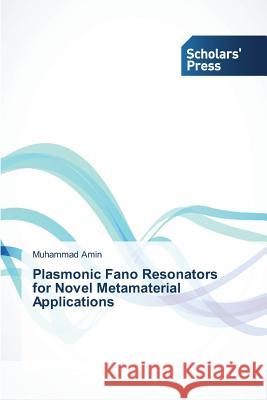Plasmonic Fano Resonators for Novel Metamaterial Applications » książka
Plasmonic Fano Resonators for Novel Metamaterial Applications
ISBN-13: 9783639764413 / Angielski / Miękka / 2015 / 132 str.
Metamaterial design at optical frequencies oftentimes makes of controllable plasmonic interactions. Light can excite collective oscillations of conduction band electrons on a metallic nanostructure. These oscillations result in localized surface plasmon modes which can provide high confinement of fields at metal-dielectric interfaces at nanoscale. Additionally scattering and absorption characteristics of plasmon modes can be controlled by geometrical features of the metallic nanostructures. This ease of controllability has lead to the development of new concepts in light manipulation and enhancement of light-material interactions. Fano resonance and plasmonic induced transparency (PIT) are among the most promising of those. The interference between different plasmon modes induced on nanostructures generates PIT/Fano resonance at optical frequencies. The unusual dispersion characteristics observed within the PIT window can be used for designing optical metamaterials to be used in various applications including bio-chemical sensing, slow light, modulation, perfect absorption, and all-optical switching.
Metamaterial design at optical frequencies oftentimes makes of controllable plasmonic interactions. Light can excite collective oscillations of conduction band electrons on a metallic nanostructure. These oscillations result in localized surface plasmon modes which can provide high confinement of fields at metal-dielectric interfaces at nanoscale. Additionally scattering and absorption characteristics of plasmon modes can be controlled by geometrical features of the metallic nanostructures. This ease of controllability has lead to the development of new concepts in light manipulation and enhancement of light-material interactions. Fano resonance and plasmonic induced transparency (PIT) are among the most promising of those. The interference between different plasmon modes induced on nanostructures generates PIT/Fano resonance at optical frequencies. The unusual dispersion characteristics observed within the PIT window can be used for designing optical metamaterials to be used in various applications including bio-chemical sensing, slow light, modulation, perfect absorption, and all-optical switching.











